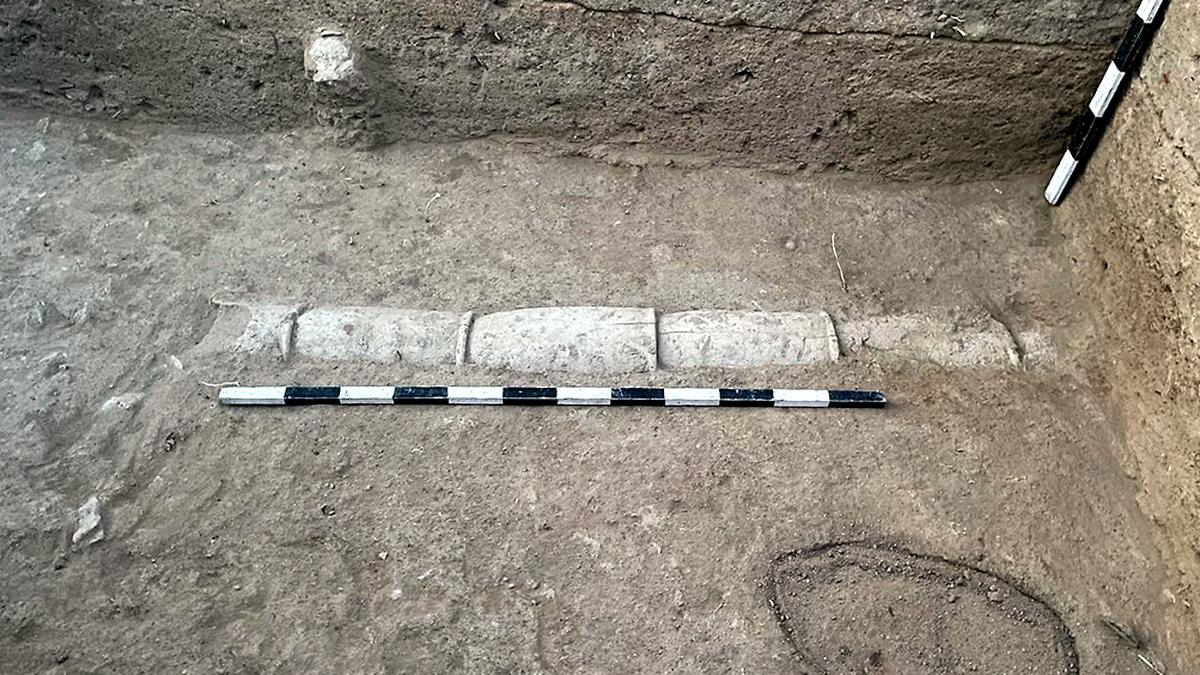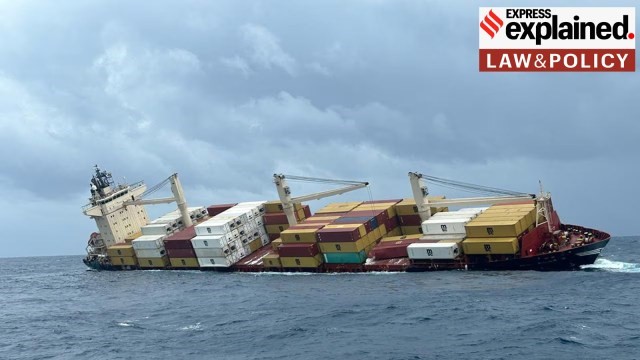Advanced Towed Artillery Gun System (ATAGS)
- 12 Jul 2025
In News:
The Advanced Towed Artillery Gun System (ATAGS) marks a significant milestone in India’s defence modernization. Developed indigenously under the ‘Make in India’ initiative, the system is poised to replace the Indian Army’s ageing artillery with cutting-edge, high-performance firepower.
Key Facts:
- Calibre: 155 mm / 52 calibre
- Maximum Range: Up to 48 km, among the longest for towed artillery globally
- Developer: Defence Research and Development Organisation (DRDO) through ARDE (Pune)
- Production Partners: Bharat Forge Ltd and Tata Advanced Systems Ltd
Project Timeline & Cost:
- Project initiated in 2012 and completed within 12 years
- In March 2025, the Defence Ministry signed contracts worth ?6,900 crore for procurement of 307 ATAGS units and associated 6×6 towing vehicles
- Delivery scheduled over five years
Salient Features of ATAGS:
- Firing Modes: Burst, Intense, and Sustained fire
- Firing Capacity: Up to five rounds per minute, 60 rounds per hour
- Automation: Fully electric gun-laying and ammunition handling, replacing conventional hydraulics for enhanced reliability and reduced maintenance
- Shoot-and-Scoot Capability: Quick repositioning post firing to avoid counter-battery fire
- Rapid Deployment: Becomes operational within 90 seconds
- Mobility: Towed by a 6×6 high mobility vehicle, suitable for desert and mountainous terrain
- Ammunition Compatibility: Supports all 155 mm ammunition types including high-explosive, smoke, illumination, and precision-guided shells
- Minimum Range Advantage: Capable of achieving shortest minimum range at high elevation angles
- Operating Conditions: Designed for extreme climates
Strategic Significance:
- Artillery Modernization: Replaces vintage, smaller-calibre guns, enhancing range, accuracy, and tactical mobility
- Indigenous Content: Over 80% components sourced domestically, contributing to Aatmanirbhar Bharat
- Mission Mode Achievement: Described as an "exemplary mission-mode success" by the Ministry of Defence
- Multi-Sector Collaboration: Joint effort between DRDO, Indian Army, public and private sector manufacturers
Broadcasting Infrastructure and Network Development (BIND) Scheme

- 12 Jul 2025
In News:
The Government of India has proposed the establishment of a new Akashvani Kendra in Ujjain, Madhya Pradesh, under the Broadcasting Infrastructure and Network Development (BIND) Scheme.
About BIND Scheme
- Type: Central Sector Scheme
- Implementing Agency: Ministry of Information and Broadcasting
- Beneficiary: Prasar Bharati (All India Radio and Doordarshan)
- Objective: To provide financial support for:
- Expansion and modernization of broadcasting infrastructure
- Content development for domestic and international audiences
- Civil works related to Prasar Bharati’s operations
Key Features
- Facilitates technological upgradation of All India Radio (AIR) and Doordarshan (DD)
- Enhances reach in border, Left-Wing Extremism (LWE)-affected, and strategic regions
- Focuses on high-quality and diverse content
- Expands the capacity of the DTH platform, enabling more channels for viewers
- Aims to boost AIR FM coverage from 59% to 66% of India's geographical area and from 68% to 80% of the population
Significance
- Supports regional broadcasting, especially in underserved and aspirational districts
- Promotes cultural preservation and grassroots-level development narratives
- Expected to create indirect employment in manufacturing and broadcast services sectors
- Aids in ensuring last-mile delivery of public communication and information services
The proposed Akashvani Kendra in Ujjain aligns with the broader vision of ‘Viksit Bharat’, focusing on inclusive media access and robust public broadcasting infrastructure. It underscores the growing synergy between the Centre and States to enhance media penetration and communication outreach.
Coartem Baby
- 12 Jul 2025
In News:
In a significant breakthrough in global health, Switzerland has approved Coartem Baby, the first malaria treatment specifically designed for newborns and infants weighing 2–5 kg. Developed by Novartis in collaboration with the Medicines for Malaria Venture (MMV) and international health partners, this pediatric formulation is set to fill a critical treatment gap in malaria-endemic regions.
About Coartem Baby:
- What it is: A pediatric formulation of the antimalarial drug artemether-lumefantrine, customized for babies under 6 months of age (2–5 kg weight range). It is also known as Riamet Baby in some countries.
- Developed by: Novartis, in partnership with MMV, with support from the governments of Switzerland, UK, Netherlands, World Bank, and the Rockefeller Foundation.
- Approval path: Authorized under Swissmedic’s Global Health Products pathway, with fast-track approvals expected in eight African nations: Burkina Faso, Ivory Coast, Kenya, Malawi, Mozambique, Nigeria, Tanzania, and Uganda
Key Features:
- Infant-Specific Design:
- Dose ratio adapted for immature liver function
- Dissolves easily in liquids, including breast milk
- Cherry-flavoured for easier administration
- Public Health Impact:
- Addresses treatment needs of ~30 million newborns born annually in malaria-endemic African countries
- Targets the most vulnerable group previously excluded from clinical trials and vaccination coverage
- Safety Advantage:
- Eliminates the risk of off-label dosing from older children’s formulations
- Offers a clinically proven, age-appropriate treatment alternative
- Access Model: Will be distributed on a largely not-for-profit basis in malaria-endemic countries
Why it matters:
- Fills a Long-standing Treatment Gap: Until now, no antimalarial drug was approved for infants weighing less than 4.5 kg, despite their high risk.
- Impact on Child Mortality:
- As per 2023 data, 597,000 malaria deaths occurred globally, with ~75% among children under 5, mostly in Africa
- The approval of Coartem Baby could drastically reduce mortality in this group
Key Facts about Malaria:
- Cause: Life-threatening illness caused by Plasmodium parasites, transmitted by infected female Anopheles mosquitoes
- Most Dangerous Species:
- Plasmodium falciparum
- Plasmodium vivax
- Transmission: Not contagious person-to-person, but can spread via infected blood or needles
- Symptoms (appear 10–15 days after bite):
- Fever, chills, vomiting, headache
- Severe: seizures, breathing difficulty, jaundice, dark urine, coma, death
- Immunity: Partial immunity can develop in endemic regions, complicating diagnosis
Accelerator Mass Spectrometry (AMS) Dating

- 12 Jul 2025
In News:
The Tamil Nadu State Department of Archaeology (TNSDA) has sent 23 charcoal samples from seven archaeological excavation sites to the Beta Analytic Laboratory in the United States for Accelerator Mass Spectrometry (AMS) dating, aiming to establish an accurate chronology of the cultural deposits unearthed during the 2024–25 excavation season.
Key Discoveries:
- Keeladi: Over 500 antiquities, 100 inscribed potsherds, including red-slipped ware with fish motifs.
- Porpanaikkottai: From 11 trenches, 1,792 antiquities such as pottery, glass beads, and bangles were found.
- Tirumalapuram: A stone slab chamber with urn burials—a first in Tamil Nadu’s megalithic excavation record.
What is AMS Dating?
- A high-precision radiocarbon dating technique that measures the Carbon-14 (C-14) content in archaeological samples.
- Unlike conventional radiometric methods, AMS counts individual atoms of C-14, not their radioactive decay.
How It Works:
- Sample Preparation: Organic samples like charcoal are chemically treated and converted to graphite.
- Ion Generation: A cesium beam bombards the graphite, generating negatively charged carbon ions.
- Acceleration: Ions are propelled by a tandem electrostatic accelerator to high kinetic energies.
- Stripping & Detection:
- Ions pass through a stripping chamber to become positively charged.
- Magnetic fields separate C-12, C-13, and C-14 isotopes based on mass.
- C-14 atoms are counted to calculate the sample’s age.
Advantages of AMS Dating:
|
Feature |
AMS Dating |
Conventional Radiocarbon Dating |
|
Sample Size |
As little as 20 mg |
Requires ≥10 grams |
|
Precision |
Higher – atom-level count |
Lower – based on decay measurement |
|
Time |
Results within hours to days |
1–2 days or more |
|
Destructiveness |
Less destructive, ideal for rare artifacts |
More sample consumed |
|
Sensitivity |
Detects trace C-14 levels in minute samples like seeds, blood, etc. |
Limited sensitivity |
Applications of AMS:
- Archaeology: Dating of charcoal, wood, bones, pottery layers.
- Climate Science: Carbon mapping in marine and sediment systems.
- Geology/Oceanography: Sediment and core dating.
- Biomedical Research: Drug microdosing, tracing labeled compounds.
Admiralty (Jurisdiction and Settlement of Maritime Claims) Act, 2017

- 12 Jul 2025
In News:
In a rare legal move, the Kerala High Court ordered the conditional arrest of the Liberian container ship MSC Akiteta II, anchored at Vizhinjam Port. The Kerala government filed an admiralty suit seeking ?9,531 crore compensation for alleged environmental and economic damage caused by the sinking of MSC Elsa III.
Legal Framework: Admiralty (Jurisdiction and Settlement of Maritime Claims) Act, 2017
Purpose:
- Consolidates and updates maritime laws in India.
- Replaces outdated colonial legislations like:
- Admiralty Court Act, 1861
- Colonial Courts of Admiralty Acts of 1890 and 1891
- Relevant provisions of Letters Patent, 1865
Applicability:
- Applies to all vessels, regardless of owner’s residence or domicile.
- Exemptions:
- Inland vessels under the Inland Vessels Act, 1917
- Warships and other government vessels used for non-commercial purposes
- Foreign government vessels used for non-commercial purposes (as notified)
Key Provisions:
Section 4 – Maritime Claims:
High Courts can adjudicate disputes related to:
- Damage to vessels or marine environment
- Oil pollution and hazardous cargo
- Ownership or possession of a vessel
- Loss of life or injury due to vessel operations
- Carriage agreements (goods/passengers)
- Claims for unpaid wages, port dues, or cargo losses
Section 5 – Arrest of Vessels:
- Courts may order “arrest” of a ship to secure a maritime claim.
- Arrest can be made even if the ship is not directly involved but is owned by the liable party.
- It serves to ensure that compensation or security is provided before the vessel is released.
- Claimants may be asked to furnish an unconditional undertaking to compensate for wrongful arrest, if proved later.
Jurisdictional Expansion:
- Earlier limited to Bombay, Calcutta, and Madras High Courts.
- Now extended to Kerala, Karnataka, Odisha, Telangana, and Andhra Pradesh as well.
- Jurisdiction covers territorial waters up to 12 nautical miles, including seabed, subsoil, and airspace.
In Rem vs In Personam:
- Legal action can be initiated directly against the vessel (in rem) or against the owner/operator (in personam), based on the nature of the claim.
